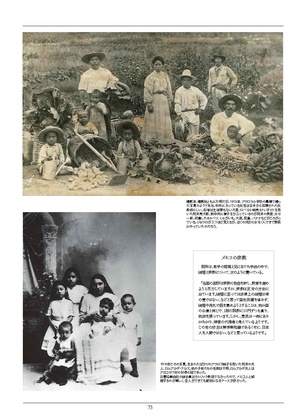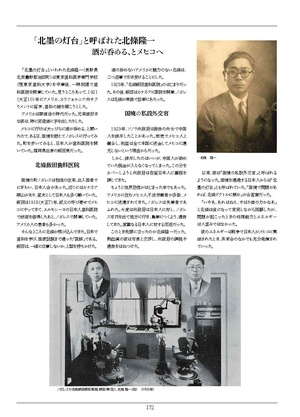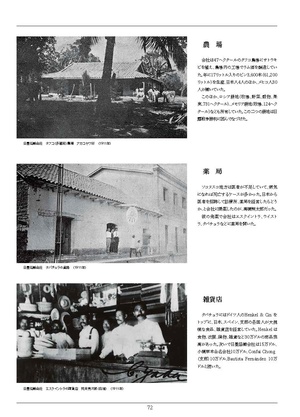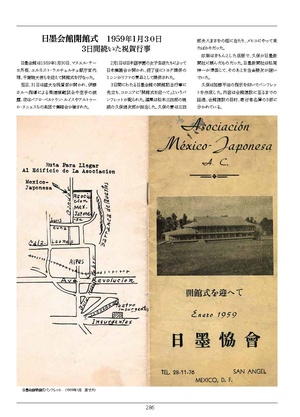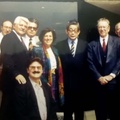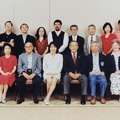The book Umi wo koete gohyakunen (500 years across the sea) written by Shozo Ogino is one of the most fascinating accounts of the relations between Mexico and Japan. Although the 440-page volume begins with the description of the first contacts between New Spain and Japan in the 16th century, the series of stories that give substance to the book address the life, anecdotes and events of the Japanese emigrants who came to Mexico after the year 1897.
It was in that year when the organized emigration of the first settlers began after the Friendship Agreement between both countries had been signed eleven years earlier. The book, in addition to recounting the relationship between both nations, has more than a thousand photos and illustrations that allow us to build an iconographic history of the life of emigrants in Mexico.
The author of the book arrived in Mexico in 1970 when he had just graduated from Waseda University in Japan. Ogino, little by little, became directly aware of the life stories of migrant workers and investigated how his countrymen became embedded in Mexican society and how they settled definitively in the different regions where they worked. With an excellent journalist's sense of smell, the author interviewed a large part of the emigrants throughout the country, which is why he managed to accumulate hundreds of testimonies.
Ogino also maintained a close relationship with some of the most important leaders of the emigrant communities, a situation that helped him better understand the organization of the Japanese and the ways in which they faced the most serious difficulties in Mexico. Among these leaders, we can mention the following:
- Takaichi Hojyo was a renowned dentist who arrived in Mexico in the 1920s. Hojyo became one of the leaders of the community before the war. The dentist was a teacher of many of the young Issei and Nisei who dedicated themselves to this profession and who currently stand out in this field. Furthermore, since Hojyo lived in Sonora until before he was concentrated in Mexico City in 1942, he met many of the emigrants who crossed the border with the United States on their move to Mexico, which is why it was called the “lighthouse of the north” according to Ogino.
- Heiji Kato, who was “targeted by the FBI,” was repatriated to Japan during the war in 1942. At the end of the conflict, Kato returned to Mexico and played a very important role in the reorganization of the Japanese community and the establishment of companies. Japanese in the years of growth of the Japanese economy at the end of the 1950s.
- Sanshiro Matsumoto was one of the most important leaders of the Japanese community. Sanshiro and his father Tatsugoro established a very close relationship with many of the presidents of Mexico since the time of Porfirio Díaz. The Matsumotos played a very important role during the concentration of Japanese during the war and years later in the creation of the Japanese Mexico Association in 1956.
- Maria Elena Ota was the daughter of a family of immigrants who lived in the countryside of Temixco, Morelos, during the war. Ota was a student and professor at El Colegio de México and published the most important book on emigration: Seven Japanese Migrations in Mexico.
In addition to knowing these important leaders of the community, another fundamental fact that allowed the author of the book to delve deeply into the history of the Japanese in Mexico was that in 1987 - as part of the celebrations of the 90 years of emigration to Mexico - he was appointed part of a commission in charge of collecting the history of emigration. Ogino actively participated in the publication of a voluminous copy that was published under the name of Nichiboku Koryushi (History of the Relations of Mexico and Japan) alongside Heiji Kato, Carlos Kasuga and Kunio Akachi.
The book that Ogino is now publishing has a great advantage because the color printing and the legal size with which it was made allow you to enjoy the stories woven by Ogino from the same photos. The narrative with which the story of the emigrants begins naturally refers to the “Enomoto Colonists” who arrived in Chiapas in 1897. However, Ogino will not dwell on that fact itself, nor on the failure that the pioneers had in the coffee plantation; The author will explain to us how the settlers built very successful businesses through which the community not only survived but managed to put down deep roots and thus contribute its experience to the residents of this region of Soconusco in Chiapas.
The author will also tell us about the various contributions of the Enomoto family, such as the formation of the first school for the children of immigrants in the American continent and the development of the Spanish-Japanese dictionary that they decisively promoted. Another of the great contributions of the Enomoto emigration was the important work that one of the emigrants, Dr. Renji Ota, carried out in caring for and curing thousands of people, a situation that made him “loved by the locals” and raised a tribute to him. monument in his honor.
The book will run throughout the 20th century, first telling the stories of Japanese who came under contract to work in agriculture, in the mines and in the construction of railways. Subsequently, the author will delve into the lives of dozens of free emigrants in different regions of the country whom Ogino will call “the lone wolves.”
The situation that the emigrants experienced during the revolution of 1910 and until the end of the Pacific War in 1945 will be a fundamental part of the book. The difficulties and adversities that these events generated in the Japanese communities and the way in which they faced them will be described through a series of anecdotes that will allow the reader to have a vision of this entire period in an accurate and entertaining way at the same time.
The stories of the various organizations and businesses that emigrants created; The schools and newspapers that they founded and that allowed them to be better informed, organized and united, will be the elements that the author will use to weave the history of the communities during the second half of the 20th century. In addition to the above, the resumption of relations between Mexico and Japan in 1952 and the constitution of the Mexico-Japanese Association were fundamental events in the consolidation of the community of Japanese emigrants and their descendants as Mexican citizens.
The author will also address the contacts and cultural influences that occurred between both countries. In the book, therefore, Japanese artists who arrived in Mexico before the war will be present, such as the theater director Seki Sano, the painter Tamiji Kitagawa and the sculptor Isamu Noguchi; the latter attracted by the Mexican muralist school headed by Diego Rivera.
The study of emigrants in 500 years across the sea. The history of the exchange between Mexico and Japan is not the history of those from “outside” who arrived in Mexico. The book tells us a complex and shared history between Mexico and Japan. The characters that Ogino addresses are people who are intertwined with the world around them, sometimes fortunately or in a torn way, they are stories of “samurai in the land of the Aztecs.” In these narratives, the Japanese merge into our own history so that Mexicans can reflect on the emigrants. We will both therefore discover pieces of what we were throughout the 20th century and the legacy that we now share inextricably.
Reading Ogino's book is essential for all those who wish to know the history of emigration and the way in which relations between Mexico and Japan were shaped by the transfer of thousands of Japanese workers to Mexico.
© 2017 Sergio Hernández Galindo


